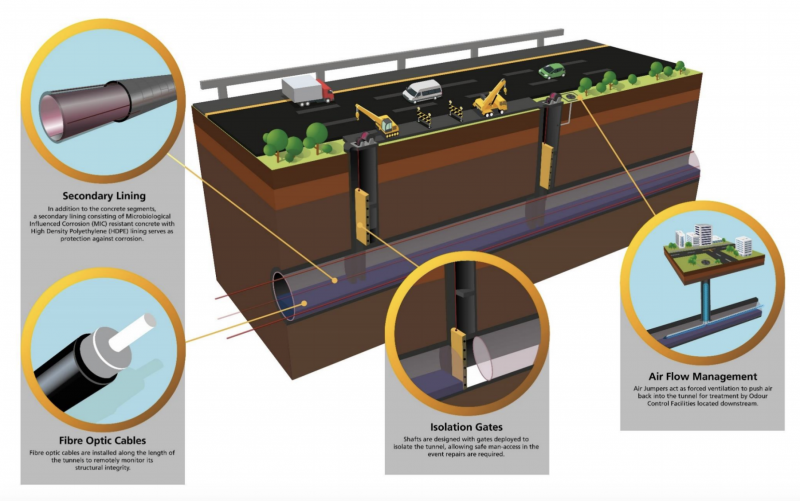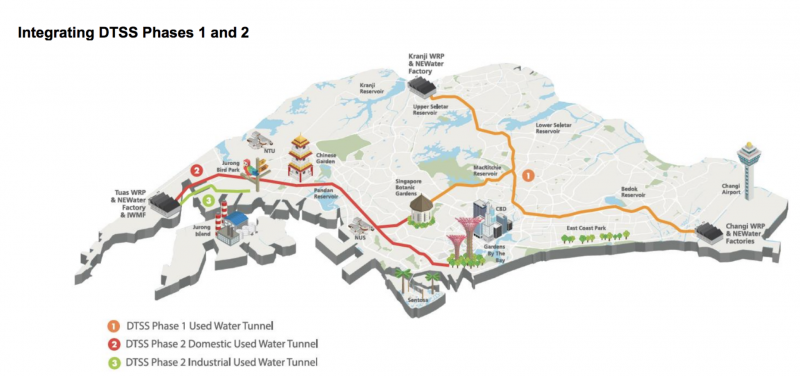When Prime Minister Lee Hsien Loong discussed new infrastructure projects being rolled out at the recent PAP party convention, he wasn't just talking about railways and buildings.
On Nov. 20, work began on the construction of Phase 2 of the Deep Tunnel Sewerage System (DTSS). It is expected to free up the equivalent of 214 football fields of land, which is currently occupied by water treatment infrastructure above ground.
Phase 2 will mostly run underneath the western part of Singapore, and link up to the existing DTSS constructed under the eastern part of Singapore during Phase 1.
Upon its completion in 2025, the DTSS will convey used water from all over Singapore to three water reclamation plants in Changi, Kranji and Tuas.
The used water will then be treated and repurposed into NEWater, or otherwise be released into the sea.
Water security
According to Minister for the Environment and Water Resources Masagos Zulkifli, who was speaking at the ground-breaking ceremony at Penjuru Road, the DTSS is an important part of Singapore's water security strategy.
Once the DTSS is up and running, NEWater will be able to satisfy 55 percent of the country's water demands. This is part of the government's measures to guard against a water shortage caused by unpredictable weather patterns and climate change.
He said:
"It is therefore critical to augment our water resources by reclaiming water so that we can use it again and again, in an endless cycle."
The DTSS will also use a variety of cutting-edge technologies to prolong its lifespan and increase its efficiency.
According to the Director of DTSS Phase 2 Yong Wei Hin, in a PUB press release:
"The DTSS is a more cost-effective and sustainable way of meeting Singapore’s used water needs and securing NEWater supply for the future than simply renewing and expanding the existing conventional used water infrastructure. PUB will continue to harness advanced technologies to enhance Singapore’s used water management system and ensure its water sustainability for the future."
These include:
- Corrosion-resistant concrete to prevent degradation from bacteria.
- An embedded fiber-optic system for remote monitoring.
- Isolation gates to allow repairs for individual sections of the DTSS.
- Air Jumpers to steer bad odours away from residential areas.
 Screen shot from PUB.
Screen shot from PUB.
The project is estimated to cost S$6.5 billion.
Several Singaporean construction and engineering companies have been contracted to build various parts of the DTSS, as well as Japanese company Nishimatsu Construction Co Limited. The DTSS Phase 2 will run largely under the Ayer Rajah Expressway, starting from Keppel Road.
 Screen shot from PUB.
Screen shot from PUB.
Related story:
Top image from PUB
If you like what you read, follow us on Facebook, Instagram, Twitter and Telegram to get the latest updates.

